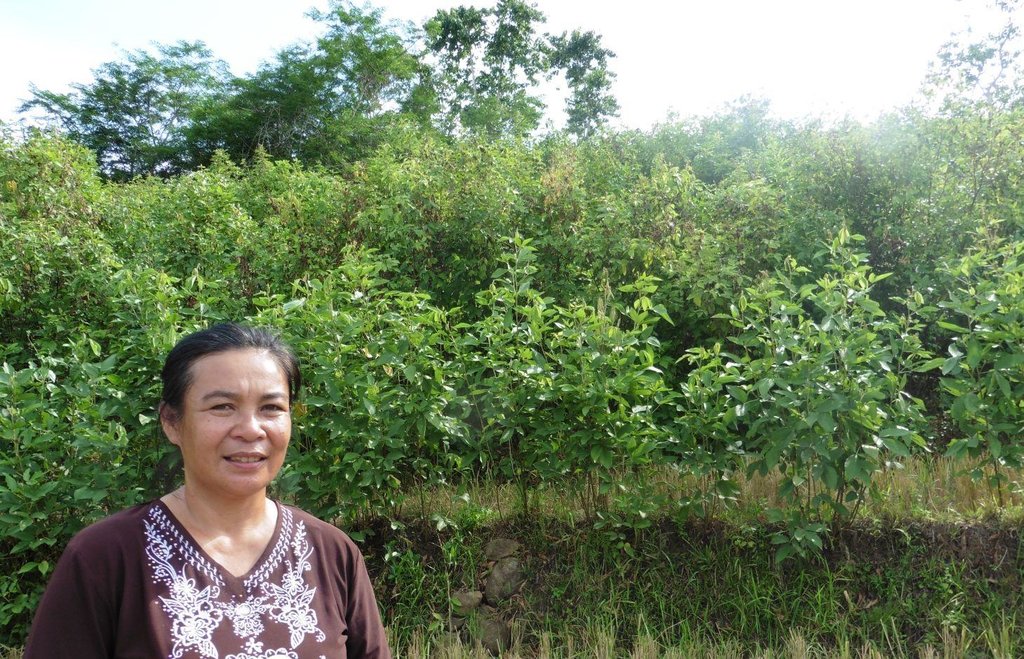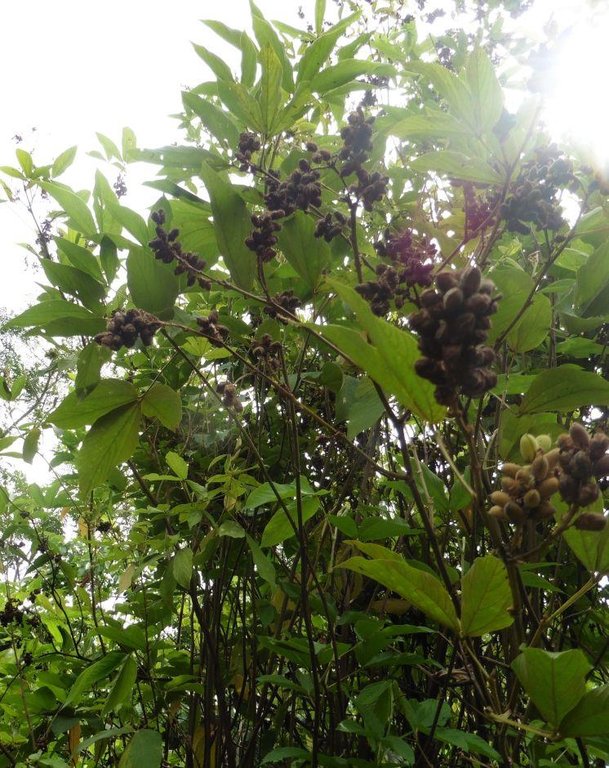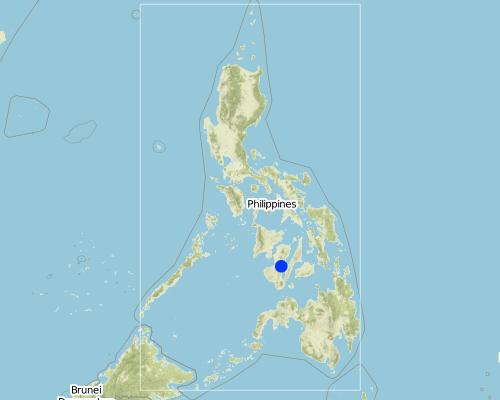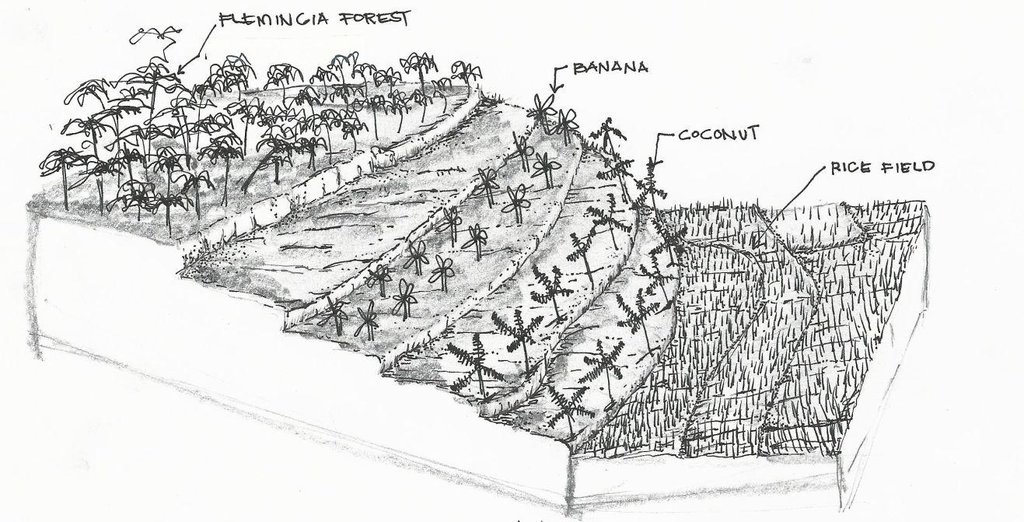Seed Production of Multipurpose Shrubs/Legumes [Philippines]
- Creation:
- Update:
- Compiler: Philippine Overview of Conservation Approaches and Technologies
- Editor: –
- Reviewer: Fabian Ottiger
technologies_1701 - Philippines
View sections
Expand all Collapse all1. General information
1.2 Contact details of resource persons and institutions involved in the assessment and documentation of the Technology
Key resource person(s)
SLM specialist:
Dinamling Djolly Ma.
Bureau of Soils and Water Management
Visayas Avenue, Vasra, Quezon City, Philippines
Philippines
SLM specialist:
Gregorio Elizabeth
Department of Agriculture-STIARC, RFO IVA
RMIC Bldg., BPI Compound Visayas Ave Quezon City
Philippines
SLM specialist:
Luistro Aida
Department of Agriculture-STIARC, RFO IVA
RMIC Bldg., BPI Compound Visayas Ave Quezon City
Philippines
SLM specialist:
Gutierrez Albert
LGU of La Libertad
Negros Orienta
Philippines
Name of the institution(s) which facilitated the documentation/ evaluation of the Technology (if relevant)
Bureau of Soils and Water Management (Bureau of Soils and Water Management) - PhilippinesName of the institution(s) which facilitated the documentation/ evaluation of the Technology (if relevant)
Southern Tagalog Integrated Agricultural Research Center (STIARC) - PhilippinesName of the institution(s) which facilitated the documentation/ evaluation of the Technology (if relevant)
LGU of La Libertad - Philippines1.3 Conditions regarding the use of data documented through WOCAT
When were the data compiled (in the field)?
27/05/2015
The compiler and key resource person(s) accept the conditions regarding the use of data documented through WOCAT:
Yes
2. Description of the SLM Technology
2.1 Short description of the Technology
Definition of the Technology:
Seed production of multipurpose shrubs and legumes, a soil conservation practice in sloping areas wherein flemingia (Flemingia macrophylla) and Indigofera (Indigofera tinctoria) are densely planted along contours.
2.2 Detailed description of the Technology
Description:
Seed production of multipurpose shrubs/legumes is introduced through the Conservation Farming Village (CFV) project in Barangay Elecia, La Libertad, Negros Oriental. Flemingia and Indigofera in particular are drilled along contour lines and maintained until seeds are matured enough for harvesting. Flemengia is a leguminous perennial, deep rooting and leafy shrub with plant height ranging from 0.5 -2.5 m. Indigofera is also a perennial shrub with height of 0.4-1.3 m. The leaves and other plant parts of these shrubs are used as mulch, green manure, feeds for livestock while hard portions and branches are used as firewood. It is regarded as high drought resistant, staying green even during dry periods of 3-4 months. Seeds produced are sold to the local government of La Libertad for the CFV project expansion.
Purpose of the Technology: Seed production of forage legumes like Flemingia and Indigofera is practiced by farmers primarily to enrich the soil and supplement the seed requirement of expansion areas of the CFV project in the municipality. The technology improves ground cover and traps dispersed or concentrated run-off in sloping areas.
Establishment / maintenance activities and inputs: In a hectare, contour establishment using an A-frame requires eight person-days while land preparation (i.e plowing and furrowing) requires at least 30 person-animal-days. Flemingia and Indigofera seeds are drilled along contours at rate of 24kg/ha and 8kg/ha, respectively. Weeding and hilling-up are done in 30 person-animal-day.
Harvesting of pods starts during the months of February, May and October. Meanwhile, Indigofera produces seeds three months after flowering which starts a year from planting. Matured pods are harvested twice a year by hand-picking then sun-dried for at least two days. Seeds are removed from pods manually.
Natural / human environment: The area is under a humid climate condition with an average annual rainfall of 1000-1500 mm per year and elevation ranging from 500-1000 m above sea level. Flemengia and Indigofera are grown by small scale farmers with a cropland size of 0.5-1 ha. Water supply for crop development mainly relies on the occurrence of rain. The area has a low access to services and infrastructure such as education, market, road and transport.
2.3 Photos of the Technology
2.5 Country/ region/ locations where the Technology has been applied and which are covered by this assessment
Country:
Philippines
Region/ State/ Province:
Brgy. Elecia, La Libertad
Further specification of location:
Negros Oriental
Map
×2.6 Date of implementation
If precise year is not known, indicate approximate date:
- less than 10 years ago (recently)
2.7 Introduction of the Technology
Specify how the Technology was introduced:
- through projects/ external interventions
3. Classification of the SLM Technology
3.2 Current land use type(s) where the Technology is applied

Cropland
- Tree and shrub cropping
Main crops (cash and food crops):
Other crops: Flemengia and Idigofera
Comments:
Major land use problems (compiler’s opinion): Land degradation, soil erosion, poor soil fertility condition
Major land use problems (land users’ perception): Problem of flooding, soil erosion, lack of vegetation to control erosion
Future (final) land use (after implementation of SLM Technology): Cropland: Ct: Tree and shrub cropping
If land use has changed due to the implementation of the Technology, indicate land use before implementation of the Technology:
Forests / woodlands: Fn: Natural
3.3 Further information about land use
Water supply for the land on which the Technology is applied:
- rainfed
3.4 SLM group to which the Technology belongs
- improved ground/ vegetation cover
- increased income through selling of seeds
3.5 Spread of the Technology
Comments:
Total area covered by the SLM Technology is 13.75 m2.
3.6 SLM measures comprising the Technology

vegetative measures
- V1: Tree and shrub cover
Comments:
Main measures: vegetative measures
3.7 Main types of land degradation addressed by the Technology

soil erosion by water
- Wt: loss of topsoil/ surface erosion

chemical soil deterioration
- Cn: fertility decline and reduced organic matter content (not caused by erosion)

biological degradation
- Bc: reduction of vegetation cover
Comments:
Main type of degradation addressed: Wt: loss of topsoil / surface erosion, Cn: fertility decline and reduced organic matter content, Bc: reduction of vegetation cover
Main causes of degradation: deforestation / removal of natural vegetation (incl. forest fires) (removal of trees), over-exploitation of vegetation for domestic use (slash and burn practice)
Secondary causes of degradation: change in temperature (temperature increase), change of seasonal rainfall (unpredictable seasonal rainfall), droughts (experienced on the month of February), education, access to knowledge and support services (limited access to learning facilities and information)
3.8 Prevention, reduction, or restoration of land degradation
Specify the goal of the Technology with regard to land degradation:
- restore/ rehabilitate severely degraded land
Comments:
Main goals: rehabilitation / reclamation of denuded land
4. Technical specifications, implementation activities, inputs, and costs
4.1 Technical drawing of the Technology
4.2 Technical specifications/ explanations of technical drawing
Flemingia stand at the top portion of Herminigilda Cabasag's farm.
Location: Brgy. Elecia,. La Libertad, Negros Oriental
Date: May 28, 2015
Technical knowledge required for field staff / advisors: moderate
Technical knowledge required for land users: moderate
Main technical functions: control of dispersed runoff: retain / trap, control of concentrated runoff: retain / trap, improvement of ground cover, promotion of vegetation species and varieties (quality, eg palatable fodder)
Secondary technical functions: reduction of slope angle, reduction of slope length, increase of surface roughness, increase in organic matter, reduction in wind speed
Aligned: -contour
Vegetative material: T : trees / shrubs
Number of plants per (ha): 6 kilogram
Vertical interval between rows / strips / blocks (m): 0.5m
Spacing between rows / strips / blocks (m): 2m
Vertical interval within rows / strips / blocks (m): drill
Width within rows / strips / blocks (m): 0.3048
Trees/ shrubs species: Flemengia and Indigofera
4.3 General information regarding the calculation of inputs and costs
other/ national currency (specify):
Peso
Indicate exchange rate from USD to local currency (if relevant): 1 USD =:
45.0
Indicate average wage cost of hired labour per day:
2.78
4.4 Establishment activities
| Activity | Type of measure | Timing | |
|---|---|---|---|
| 1. | Land Preparation:PlowingHarrowing and Furrowing | Vegetative | Before onset of rainy season |
| 2. | Establishment of contour lines/ laying out | Vegetative | Before onset of rainy season |
4.5 Costs and inputs needed for establishment
| Specify input | Unit | Quantity | Costs per Unit | Total costs per input | % of costs borne by land users | |
|---|---|---|---|---|---|---|
| Labour | Labour | 0.25ha | 1.0 | 49.44 | 49.44 | 100.0 |
| Equipment | Bamboo sticks | 50 pegs | 1.0 | 2.22 | 2.22 | 100.0 |
| Total costs for establishment of the Technology | 51.66 | |||||
4.6 Maintenance/ recurrent activities
| Activity | Type of measure | Timing/ frequency | |
|---|---|---|---|
| 1. | Weeding/ Hilling-up | Vegetative | Rainy Season |
| 2. | Harvesting | Vegetative | Five times per year |
| 3. | Sun Drying | Vegetative | |
| 4. | Manual Threshing | Vegetative | |
| 5. | Harvesting of Flemengia and Indigofera | Vegetative |
4.7 Costs and inputs needed for maintenance/ recurrent activities (per year)
| Specify input | Unit | Quantity | Costs per Unit | Total costs per input | % of costs borne by land users | |
|---|---|---|---|---|---|---|
| Labour | Labour | 0.25ha | 1.0 | 43.1 | 43.1 | 100.0 |
| Total costs for maintenance of the Technology | 43.1 | |||||
5. Natural and human environment
5.1 Climate
Annual rainfall
- < 250 mm
- 251-500 mm
- 501-750 mm
- 751-1,000 mm
- 1,001-1,500 mm
- 1,501-2,000 mm
- 2,001-3,000 mm
- 3,001-4,000 mm
- > 4,000 mm
Agro-climatic zone
- humid
Thermal climate class: tropics
5.2 Topography
Slopes on average:
- flat (0-2%)
- gentle (3-5%)
- moderate (6-10%)
- rolling (11-15%)
- hilly (16-30%)
- steep (31-60%)
- very steep (>60%)
Landforms:
- plateau/plains
- ridges
- mountain slopes
- hill slopes
- footslopes
- valley floors
Altitudinal zone:
- 0-100 m a.s.l.
- 101-500 m a.s.l.
- 501-1,000 m a.s.l.
- 1,001-1,500 m a.s.l.
- 1,501-2,000 m a.s.l.
- 2,001-2,500 m a.s.l.
- 2,501-3,000 m a.s.l.
- 3,001-4,000 m a.s.l.
- > 4,000 m a.s.l.
Comments and further specifications on topography:
Altitudinal zone: 501-1000m a.s.l. (552 meters)
5.3 Soils
Soil depth on average:
- very shallow (0-20 cm)
- shallow (21-50 cm)
- moderately deep (51-80 cm)
- deep (81-120 cm)
- very deep (> 120 cm)
Soil texture (topsoil):
- fine/ heavy (clay)
Topsoil organic matter:
- high (>3%)
If available, attach full soil description or specify the available information, e.g. soil type, soil PH/ acidity, Cation Exchange Capacity, nitrogen, salinity etc.
Soil fertility is medium
Soil drainage / infiltration is medium
Soil water storage capacity is medium
5.4 Water availability and quality
Ground water table:
< 5 m
Availability of surface water:
good
Water quality (untreated):
good drinking water
5.5 Biodiversity
Species diversity:
- medium
Habitat diversity:
- medium
5.6 Characteristics of land users applying the Technology
Market orientation of production system:
- commercial/ market
Relative level of wealth:
- poor
- average
Individuals or groups:
- individual/ household
Level of mechanization:
- manual work
- animal traction
Gender:
- women
- men
Indicate other relevant characteristics of the land users:
Land users applying the Technology are mainly common / average land users
Population density: < 10 persons/km2
Annual population growth: 1% - 2%; 2%
60% of the land users are average wealthy and own 60% of the land.
40% of the land users are poor and own 40% of the land.
Level of mechanization: Manual work and animal traction (carabao)
Market orientation: Commercial/market (for Local Governmnet Unit expansion projects)
5.7 Average area of land owned or leased by land users applying the Technology
- < 0.5 ha
- 0.5-1 ha
- 1-2 ha
- 2-5 ha
- 5-15 ha
- 15-50 ha
- 50-100 ha
- 100-500 ha
- 500-1,000 ha
- 1,000-10,000 ha
- > 10,000 ha
Is this considered small-, medium- or large-scale (referring to local context)?
- small-scale
5.8 Land ownership, land use rights, and water use rights
Land ownership:
- individual, titled
Land use rights:
- individual
Water use rights:
- open access (unorganized)
5.9 Access to services and infrastructure
health:
- poor
- moderate
- good
education:
- poor
- moderate
- good
technical assistance:
- poor
- moderate
- good
employment (e.g. off-farm):
- poor
- moderate
- good
markets:
- poor
- moderate
- good
energy:
- poor
- moderate
- good
roads and transport:
- poor
- moderate
- good
drinking water and sanitation:
- poor
- moderate
- good
financial services:
- poor
- moderate
- good
6. Impacts and concluding statements
6.1 On-site impacts the Technology has shown
Socio-economic impacts
Production
crop production
product diversity
Income and costs
farm income
diversity of income sources
Socio-cultural impacts
community institutions
Improved livelihoods and human well-being
Ecological impacts
Water cycle/ runoff
harvesting/ collection of water
Soil
soil cover
soil loss
nutrient cycling/ recharge
6.3 Exposure and sensitivity of the Technology to gradual climate change and climate-related extremes/ disasters (as perceived by land users)
Gradual climate change
Gradual climate change
| Season | Type of climatic change/ extreme | How does the Technology cope with it? | |
|---|---|---|---|
| annual temperature | increase | not well |
Climate-related extremes (disasters)
Meteorological disasters
| How does the Technology cope with it? | |
|---|---|
| local rainstorm | well |
Climatological disasters
| How does the Technology cope with it? | |
|---|---|
| drought | not well |
Comments:
Mitigating measure is recommended such as drip irrigation if it is for commercial seed production.
6.4 Cost-benefit analysis
How do the benefits compare with the establishment costs (from land users’ perspective)?
Short-term returns:
positive
Long-term returns:
positive
How do the benefits compare with the maintenance/ recurrent costs (from land users' perspective)?
Short-term returns:
positive
Long-term returns:
positive
6.5 Adoption of the Technology
If available, quantify (no. of households and/ or area covered):
10 land user families/households
Of all those who have adopted the Technology, how many have did so spontaneously, i.e. without receiving any material incentives/ payments?
- 50-90%
Comments:
63% of land user families have adopted the Technology with external material support
10 land user families have adopted the Technology with external material support
Comments on acceptance with external material support: External support in terms of seed subsidy and trainings provided for the land user.
37% of land user families have adopted the Technology without any external material support
6 land user families have adopted the Technology without any external material support
There is a moderate trend towards spontaneous adoption of the Technology
Comments on adoption trend: Other neighboring villages are adopting the technology to supplement the production of forage seeds used as hedgerows in the municipality.
6.7 Strengths/ advantages/ opportunities of the Technology
| Strengths/ advantages/ opportunities in the land user’s view |
|---|
| Increased and diversified income of the land users to support their families and send their children to school. |
|
Strong LGU support through provision of trainings on vermi composting, nursery establishment, farm planning, forestry, vegetable production, determining soil erosion and rapid composting. How can they be sustained / enhanced? Establishment of training centers for farmers and agricultural technician of the LGU for knowledge sharing. |
| Strengths/ advantages/ opportunities in the compiler’s or other key resource person’s view |
|---|
|
Multipurpose shrubs/legumes planted along contour control soil erosion, increased soil fertility and serve as wind break. How can they be sustained / enhanced? Continuous practice and support from the local government. |
|
Available market for the seeds. Flemingia and Indigofera seeds are sold to the Local Government Unit of La Libertad at 250 pesos (5.56 dollar) per kilogram to be used in other CFV barangay as hedgerows. How can they be sustained / enhanced? Improvement of the packaging of the forage seeds to increase its viability and marketability outside the municipality. |
6.8 Weaknesses/ disadvantages/ risks of the Technology and ways of overcoming them
| Weaknesses/ disadvantages/ risks in the land user’s view | How can they be overcome? |
|---|---|
| Prone to pod-popping when seeds are over matured resulting in low seed harvest | To harvest on time |
| Lack of post-harvest facility on the seed storage area | Provision of storage facility to maintain seed viability and prolong seed shelf life. |
| Weaknesses/ disadvantages/ risks in the compiler’s or other key resource person’s view | How can they be overcome? |
|---|---|
| Low seed production during long dry season or drought | Provision of irrigation system |
Links and modules
Expand all Collapse allLinks
No links
Modules
No modules






